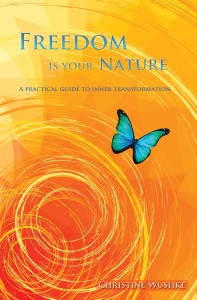Fun Fascia Fact:
About 7.5 liters of fluid moves through the extracellular matrix each day. (That’s a lot, considering we only hold 4.5 liters of blood at a time!) When your fascia is restricted, it limits the flow of fluid. Imagine a sponge wrapped up tightly with elastic bands and thrown into a sink full of water: it’s not going to be able to absorb very much.
When we move, stretch, or apply pressure to our body we are squeezing the sponge. If you can successfully allow those deep tissues to let go while you are being squeezed, you loosen the tight elastic. This is why the placement of balls in yoga poses–where and how they apply pressure (squeeze the sponge)–is so important, and why an inner state of mental surrender is so effective for facilitating change.
In addition to adding the element of pressure with soft balls to our yoga practice, we will also explore the benefit of rebounding. Rebounding is the third pillar of myofascial release, and an important aspect to integrate into any movement regimen. In this practice, we tap into the fluid in the cells with rhythmical movements like jostling and rocking to break up habitual holding patterns and restrictions in the fascia.
We already know the effectiveness of using pulse vibrations to break up solid structures (just like when we use sound waves to break up kidney stones with ultrasound equipment); imagine the benefits of utilizing that principle in body movement for releasing stuck fascia.
The next Myofascial Yoga: Fascia-Liquids module* will teach you how to place the balls in various poses to get the desired results. We will also go over a number of techniques to effectively release those ‘elastic band’ restrictions, as well as the importance of incorporating rebounding into your yoga sequences.
Topics covered:
~ Myofascial rebounding in supine, seated, and standing postures; how is this useful for our fascia and nervous system?
~ Understanding unconscious holding patterns, and how to access conscious choice and change through rebounding and unwinding
~ Ball placement in yoga poses for soft tissue release as well as deepening interoceptive awareness or resourcing for pain managment
~ The science of fascia at the cellular and molecular level
~ Understand your fascial system through the lens of the ‘liquid crystal’ matrix, and why this matters to our wellbeing
~ Learn fascial anatomy & how to engage some of the more popular fascial lines through mindful movement and common yoga poses
Dates: January 28 & 29 2023
Hours: Saturday and Sunday 10 am to 1 pm live on zoom
Self Study Content: 6 hours self paced video, audio and other self study & practice guides are unlocked upon registration for each module.
Platform: zoom (click here to receive the login info)
Phone: 403-701-9567 (text messages are welcome)
Investment: Sliding scale fee $99 – $333*
Registration information:
*Workshops during the pandemic are being offered at a sliding scale fee. Please feel free to select a payment option that suits your current situation.
Register here:
Looking for more payment options?
Payment Plans are available here.
Payment in full: Sliding scale fee for the full 200-hour program is $1330- $3999 (this offer will be in place for the duration of the global pandemic. Prices will re-set to the regular rate in 2024.)
Click here to make your full one-time payment for the 200-hour myofascial yoga teacher training program.

““Rebounding is using the fluid dynamics of the human being to enhance consciousness and release fascial restrictions.” ~ John Barnes
